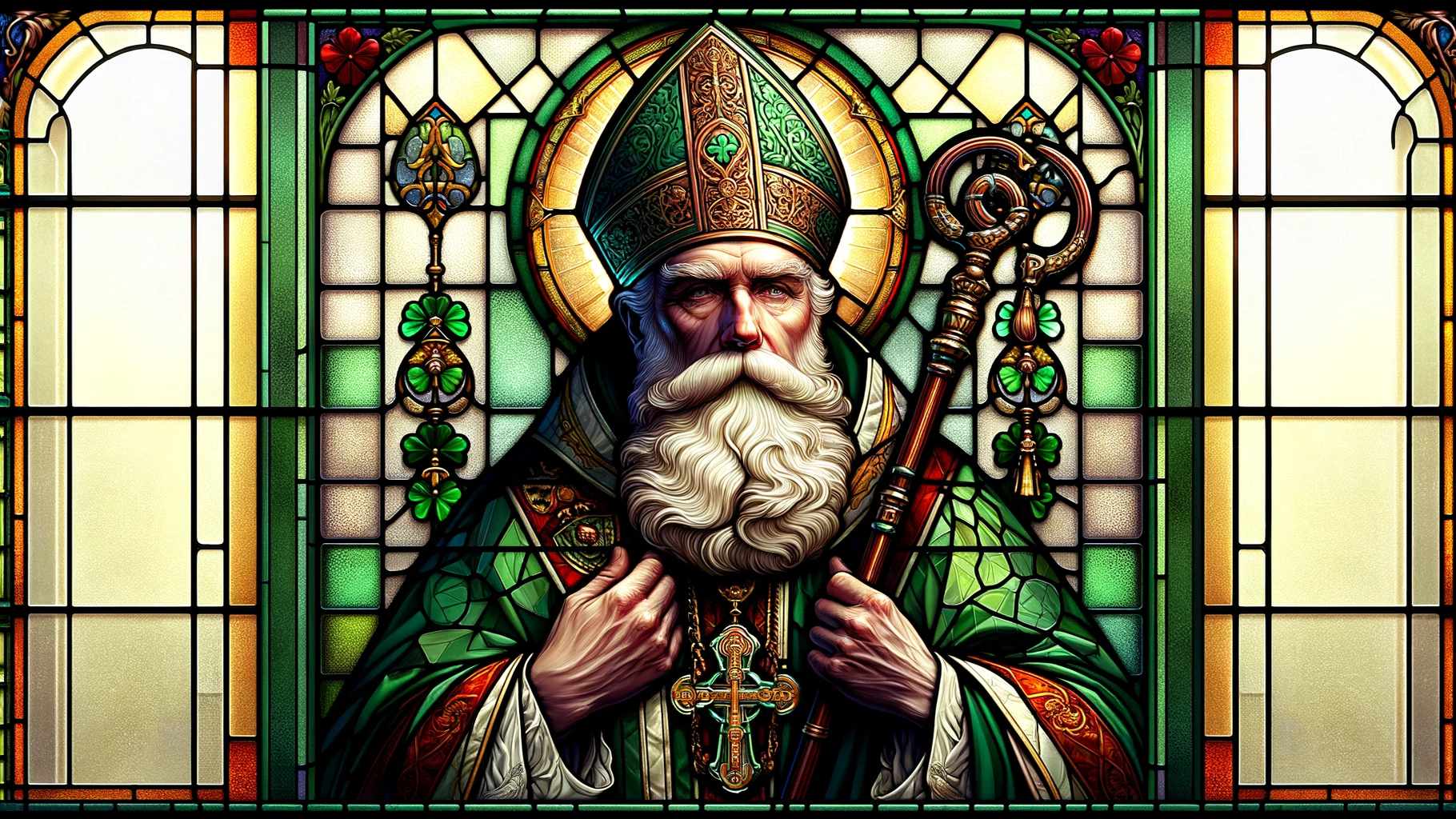Home>Special Themes>Why Is Lent 46 Days Long?


Special Themes
Why Is Lent 46 Days Long?
Published: February 27, 2024
Ericka Andersen, an editor at Christian.net, expertly merges digital strategy with content creation, focusing on faith and societal issues. Her communication skills enhance the platform's engaging narratives, fostering meaningful dialogue on belief's impact on society.
Discover the significance of Lent's 46-day duration and its connection to the season's special themes. Explore the spiritual and historical reasons behind this extended period of reflection and preparation.
(Many of the links in this article redirect to a specific reviewed product. Your purchase of these products through affiliate links helps to generate commission for Christian.net, at no extra cost. Learn more)
Table of Contents
The History of Lent
Lent has a rich history that dates back to the early days of Christianity. The word "Lent" itself comes from the Old English word "lencten," which means spring. The observance of Lent can be traced back to the 4th century, making it one of the oldest traditions in the Christian faith. Initially, Lent was observed for 40 hours, symbolizing the time Jesus spent in the wilderness. Over time, this period was extended to 40 days, excluding Sundays, to mirror the 40 days Jesus spent fasting in the desert. The early Christians used this time for fasting, prayer, and penance as a way to prepare for the celebration of Easter, the most significant event in the Christian calendar. As the centuries passed, Lent evolved into a period of spiritual reflection and self-examination, with an emphasis on repentance and renewal.
The observance of Lent has evolved over the centuries, but its roots remain deeply embedded in the early traditions of the Christian church. Understanding the history of Lent provides insight into the significance of this season and the reasons behind its 46-day duration.
Read more: Why 50 Days Of Lent
The Significance of 40 Days
-
Biblical Symbolism: The number 40 holds significant symbolism in the Bible. It is a number associated with testing, trial, and transformation. For example, Moses spent 40 days on Mount Sinai, and the Israelites wandered in the wilderness for 40 years. Jesus himself fasted for 40 days in the desert, where he faced temptation from the devil. This period of 40 days is seen as a time of preparation, purification, and spiritual growth.
-
Spiritual Preparation: The 40 days of Lent provide an opportunity for Christians to engage in self-reflection, repentance, and spiritual discipline. It is a time to examine one's life, seek forgiveness for wrongdoings, and strive for personal growth. Through prayer, fasting, and acts of charity, believers prepare their hearts and minds to fully experience the joy and significance of Easter.
-
Emulating Jesus' Journey: The 40-day duration of Lent is a way for Christians to follow in the footsteps of Jesus. By dedicating this period to prayer and self-denial, believers seek to align themselves with the example set by Jesus during his time in the wilderness. This journey of self-discipline and spiritual introspection allows individuals to draw closer to God and deepen their faith.
-
Renewal and Transformation: The 40 days of Lent are a time for renewal and transformation. It is an opportunity for believers to let go of distractions, refocus their priorities, and realign their lives with their faith. Through the disciplines of Lent, individuals aim to shed old habits, grow in virtue, and emerge spiritually rejuvenated as they approach the celebration of Easter.
-
Preparation for Easter: Ultimately, the 40 days of Lent serve as a preparation for the joyous celebration of Easter. By engaging in a period of self-examination and spiritual growth, Christians are better able to appreciate the significance of Christ's resurrection. The disciplines of Lent pave the way for a deeper understanding of the Easter message and a more profound experience of the resurrection.
The Addition of Ash Wednesday and Holy Week
The observance of Lent is bookended by two significant events: Ash Wednesday and Holy Week. These additions further enrich the spiritual journey of Lent and add depth to the overall experience for Christians.
Ash Wednesday
Ash Wednesday marks the beginning of Lent and is observed with a solemn church service. During this service, the priest applies ashes in the shape of a cross on the foreheads of the faithful, accompanied by the words, "Remember that you are dust, and to dust you shall return." This act serves as a powerful reminder of human mortality and the need for repentance. The ashes used on Ash Wednesday are typically made by burning the palm branches from the previous year's Palm Sunday, symbolizing the transition from triumph to penitence. The somber tone of Ash Wednesday sets the stage for the introspective and penitential season of Lent.
Holy Week
Holy Week, the final week of Lent, holds profound significance in the Christian calendar. It commemorates the events leading up to Jesus' crucifixion and resurrection. The week begins with Palm Sunday, which celebrates Jesus' triumphant entry into Jerusalem, and culminates in Easter Sunday, the pinnacle of the Christian faith. Throughout Holy Week, Christians engage in special services and observances that reenact the events of Jesus' final days, including Maundy Thursday, which commemorates the Last Supper, and Good Friday, which solemnly remembers Jesus' crucifixion. Holy Week provides a focused opportunity for believers to reflect on the sacrifice of Jesus and the profound implications of his resurrection.
The addition of Ash Wednesday and Holy Week to the Lenten season serves to deepen the spiritual significance of this period. These observances provide a structured framework for believers to engage in prayer, self-examination, and contemplation of the central events of the Christian faith. By incorporating these elements into the 40-day journey of Lent, Christians are able to more fully immerse themselves in the transformative power of this sacred season.
Read more: Why Do We Have Lent For 40 Days
The Symbolism of 46 Days
The extension of Lent to 46 days holds its own symbolism within the Christian tradition. While the 40-day period mirrors the time Jesus spent in the wilderness, the additional six days carry their own significance.
Preparation and Anticipation
The six extra days can be seen as a time of heightened preparation and anticipation for the celebration of Easter. It allows for a more deliberate and intentional approach to the culmination of Lent. This extended period serves as a reminder that the journey of Lent is not merely a countdown to Easter, but a profound and transformative experience in its own right.
Emphasis on Spiritual Discipline
The 46 days of Lent emphasize the importance of spiritual discipline and perseverance. It provides an extended opportunity for believers to engage in acts of self-denial, prayer, and reflection. The additional days underscore the commitment to spiritual growth and the willingness to endure the challenges of the Lenten season.
Reflection on the Fullness of Christ's Journey
The 46 days of Lent invite believers to reflect on the entirety of Christ's journey, from his time in the wilderness to his ultimate triumph over death. It allows for a more comprehensive contemplation of the significance of Jesus' life, ministry, and sacrifice. The extended period encourages a deeper immersion into the narrative of salvation and the redemptive work of Christ.
Read more: When Is The First Day Of Lent
Incorporation of Sundays
By extending Lent to 46 days, Sundays are included in the season. Sundays are traditionally viewed as mini-Easters, representing the weekly celebration of Christ's resurrection. The inclusion of Sundays in the Lenten period serves as a reminder of the ongoing joy and hope found in the resurrection, even amidst the solemnity of the season.
A Holistic Journey of Renewal
The 46 days of Lent offer a holistic journey of renewal and transformation. It encompasses the themes of repentance, self-examination, and spiritual growth, while also embracing the anticipation of Easter. This extended period allows for a more comprehensive experience of the Lenten disciplines and a deeper preparation for the joyous celebration of Christ's resurrection.
In essence, the symbolism of 46 days in Lent speaks to the depth, intentionality, and fullness of the Christian journey during this sacred season. It underscores the multifaceted nature of Lent as a time of preparation, discipline, reflection, and ultimately, joyful anticipation of the resurrection.













